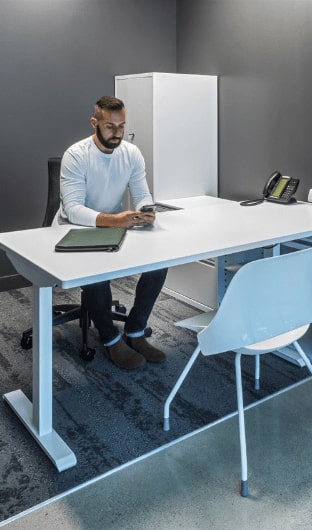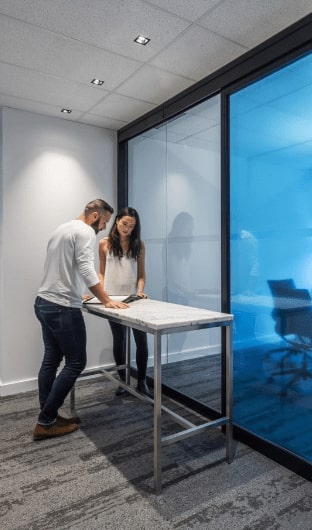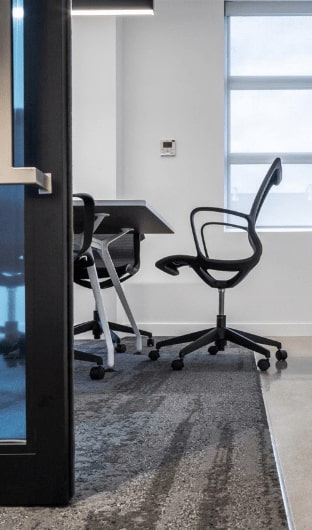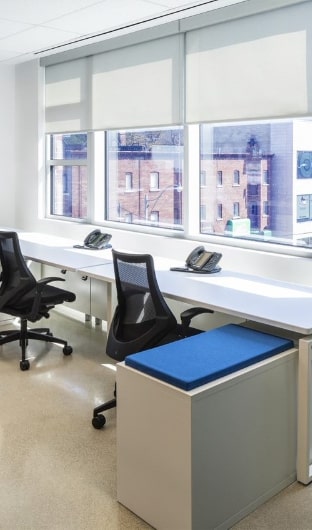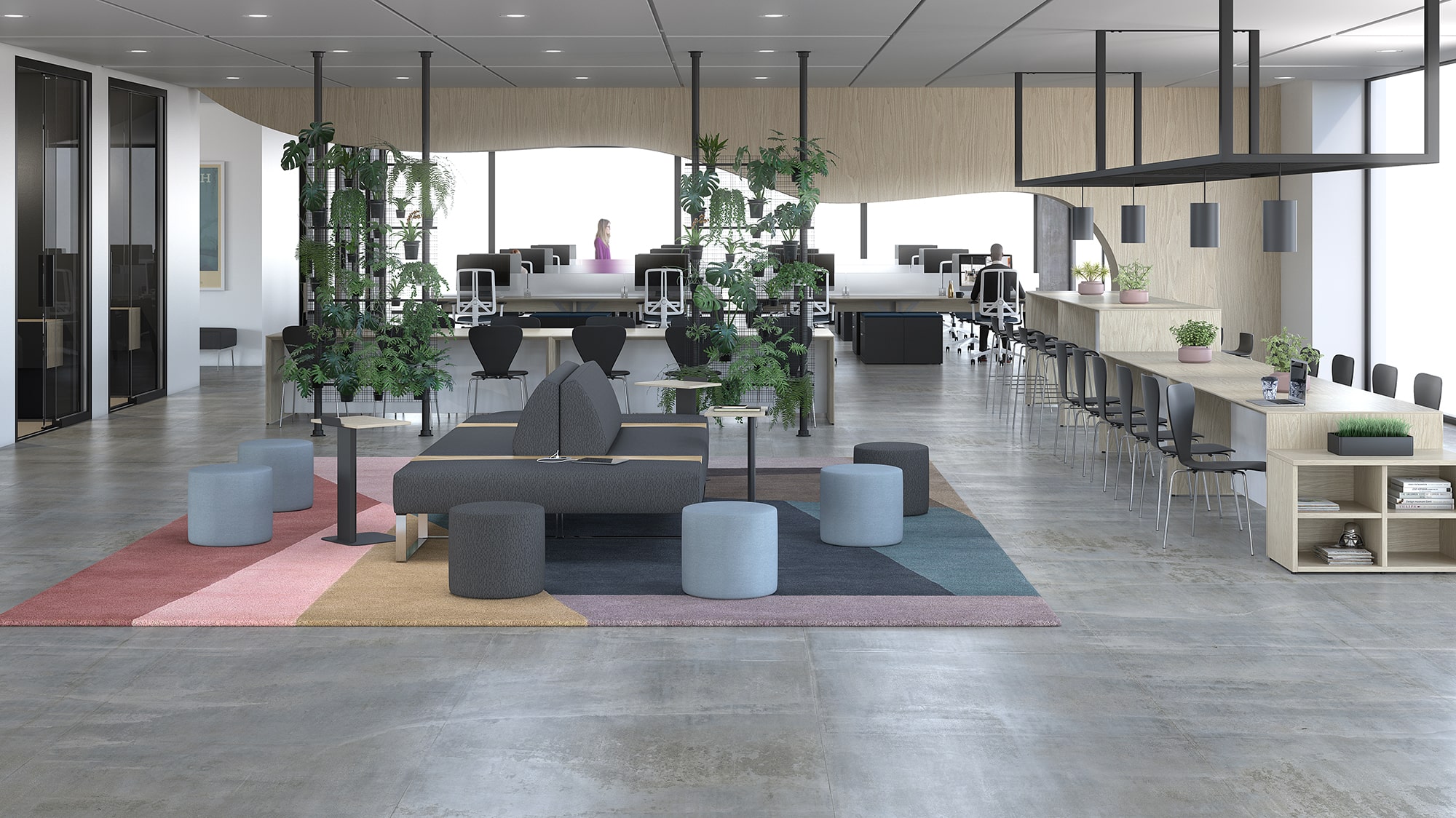
How to Design for Neurodiversity in the Workplace
Accessibility is at the forefront of workplace design considerations, and creating spaces geared towards all employees’ health and wellbeing should be a priority in all office redesigns. In order to ensure spaces are accessible to all, employers must not only take physical barriers into consideration, but should also consider creating spaces catered to neurodiverse employees.
Neurodiverse employees offer valuable diversity of thought to an organization, giving them a competitive advantage. However, it may be difficult for neurodiverse individuals to thrive in a traditional workplace. They may face challenges including difficulty concentrating, managing distractions, and regulating emotions when placed in a typical workplace.
Not only can this make employees uncomfortable, but they will be unable to perform at their full potential, depriving organizations of their unique and valuable perspectives and thought processes. Optimizing your work environment to support each individual and their preferences will support overall employee wellbeing while also increasing productivity. Continue reading to learn how to design a workspace that accommodates neurodiverse employees, so that you can begin to create a more accessible workplace.
What is Neurodiversity?
Neurodiversity refers to the natural range of variation in human neurocognition, and the differences in the way that individuals think, process information, and relate to others. It is estimated that 15-20% of people are neurodiverse, including those with ADHD, autism, dyslexia, and other conditions—many of whom are left undiagnosed throughout their lives. Neurodiverse individuals often possess strong talents in innovation, creative storytelling, empathy, design thinking, pattern recognition, coding and problem solving.
These unique talents mean neurodiverse individuals can be a huge asset for businesses. While they often face disadvantages in the hiring process or in the workplace, employers are beginning to recognize their value, thus seeking them out. It is important to design an office that takes the needs of neurodiverse individuals into consideration so that they can perform to the best of their ability which will allow their unique talents to shine.
How to Design for Neurodiverse Employees?
When designing to accommodate neurodiverse individuals there are some considerations to keep in mind. It is important to consider the experiential aspects of a space when designing for neurodiverse individuals, as they can often be over- or under-stimulated by their environments. Stimulants can include sound, light, texture, smell, temperature, air quality, or overall sense of security, and can play a significant role in their comfort and productivity levels. Here are some major factors to consider when designing for neurodiverse individuals:
- Spatial Organization – Spatial organization allows people to easily understand where they are and find their way, and intentional spatial organization can be comforting. Use memorable elements, landmarks and focal points, and strategic use of lighting and materials to create an intentionally planned space that can be easily navigated by all.
- Spatial Character – To accommodate the needs of all, offer a variety of workspaces throughout your office. This will allow people to choose the environment most appropriate for their task and productivity needs. Offering open spaces for socialization, private spaces for focused work, technology-rich or technology-free spaces to complete work or recharge after a meeting can allow neurodiverse individuals to focus better and remain engaged while at work.
- Acoustic Quality – The acoustics in a space can provide a distraction as both too much or too little auditory stimulation could be intolerable to someone who is neurodivergent. Create a variety of auditory settings throughout the office to support diverse activities, in order to provide acoustic comfort to all employees within a variety spaces.
- Thermal Comfort – Thermal comfort and temperature has significant impact on productivity. Provide individual temperature controls (window or air diffuser, ex) to allow workers to adjust temperatures to their liking. Provide thermally varied spaces (outdoor space, ex) so people can choose a location to suit their thermal preference.
- Lighting – Lighting levels and types can impact emotions and decision making. Bright lighting can intensify feelings, while lower lighting can result in more rational decisions. Further, mimicking natural daylight by changing levels of lighting throughout the day can reduce stress, and access to daylight can result in increased physical and emotional well-being. Switch from fluorescent to LED lights and provide a variety of lighting types throughout the workspace, to increase the comfort of neurodiverse and neurotypical employees.
- Degree of Stimulation – For some, visual, auditory, or scent-based cues can be overwhelming; for others, lack of stimulation can be a problem. Create options so that employees can choose or control their level of sensory stimulation. For example, use of colour within a space should be considered when planning the level of stimulation in an area – blues & greens are calming, whereas yellows and reds are stimulating.
Keeping these factors in mind when creating a space will help it to be welcoming for both neurodiverse and neurotypical employees. However, it is also important to remember that everyone is different. A design that suits one neurodivergent employee will not suit every neurodivergent employee. Everyone is unique, and will have different preferences. It is important to design to accommodate as many individual needs as possible.
How to Further Support Neurodiverse Employees
Alongside design considerations, there are many ways that you can support your neurodiverse employees while they are in the office. First and foremost, be sure to foster a workplace culture of inclusion and respect, where everyone is valued for their unique perspectives and skills. Offer training to staff to help them understand neurodiversity in the workplace, and how they can better support their neurodiverse friends and colleagues.
Create flexible work policies that allow individuals autonomy over their schedules and their work environments. When in office, allow employees to move between spaces at will to promote higher productivity. If possible, include work from home options and flex hours to give employees the freedom to work where and when they will be able to be most productive.
Finally, when in doubt about someone’s work preferences or stimulation needs… ask! Everyone is different and understanding your employees and their individual needs will allow you to support them in and out of the workplace. Not only will you be able to better support your employee, but they will also be able to feel more comfortable, understood, and valued.
In order to design for neurodiverse individuals, it is important that your organization and design plans remain fluid and adaptable. Remember, one size does not fit all! Offer your employees a wide range of choices while at the office, allowing them to select the best space for their individual needs and tasks. By designing for neurodiverse employees, you will in fact be supporting all employees. The overlap between designing for neurodiversity and improved health suggests that the benefits of a more inclusive workplace will apply to the population at large.
Harkel Office can help you to design an inclusive space and choose the furniture pieces that will best support the needs of your employees. We understand that one size does not fit all, and our unique process and expert staff will help you through the process of designing your own unique space. Contact Harkel Office today and Get It Right!


